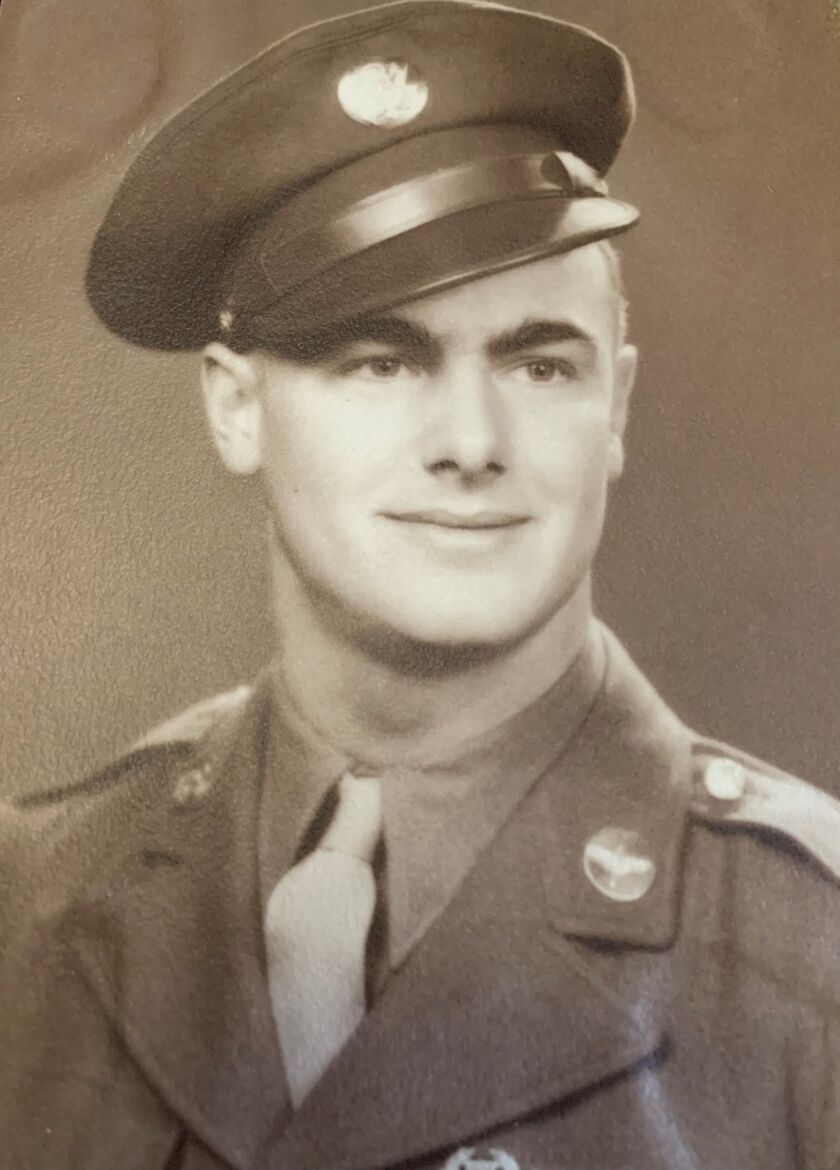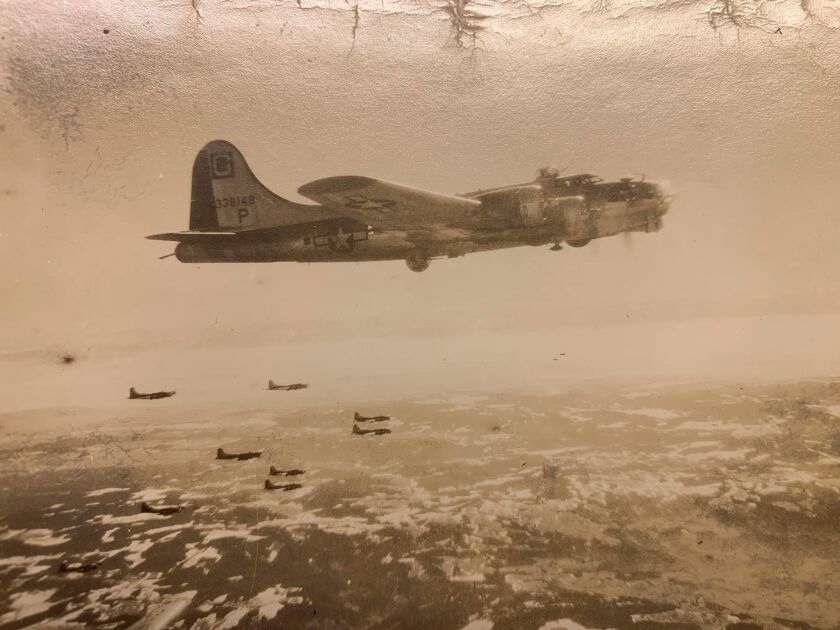Seventy-six years after being killed in World War II, the remains of U.S. Army Air Forces Sgt. Francis Wiemerslage returned home Friday.
Wiemerslage, a native of suburban River Grove, was a 20-year-old ball turret gunner on a B-17G Flying Fortress bombing during a mission over Dresden on March 2, 1945, when the plane was shot down by enemy fighters.
Two of the nine crew members parachuted from the aircraft before it exploded in mid-air and crashed near Zullsdor, Germany. The six others killed were found and identified by 1949, but Wiemerslage remained unaccounted for until August, when his remains were confirmed.
On Friday, five members of Wiemerslage’s family — four nieces and a nephew, all who knew “Frankie” as he was referred to through family stories — were met at Midway Airport by members of the American Legion Post 335 from River Grove; members of Rolling Thunder Northern Illinois Chapter, a nonprofit organization dedicated to publicizing POW/MIA issues; members of three chapters of the Patriot Guard Riders, a group that attends the funerals of U.S. military and first responders; and the U.S. Army Honor Guard.
For Wiemerslage’s family, the long saga of finding and then receiving their relative’s remains brought closure but was bittersweet.
Wiemerslage had three siblings — a sister and two brothers. His brother Roland (“Rollie”), who passed away in 2019 at the age of 84, searched for his brother most of his life and gave a DNA sample to assist in recovery efforts shortly before he died, according to his nephew Phil Wiemerslage.
“Our uncle, one of his last words to all of us was, ‘Don’t forget about Frankie,’” Wiemerslage said. “There’s a sadness that they aren’t here to witness it, but at the same time, we’re the ones that are left to see it through.”
After the war, the American Graves Registration Command was in charge of recovering the remains of fallen service members in Europe. Between 1947 and 1949, the remains of all the airmen who died in the B-17 crash, except for Wiemerslage, were found and identified, according to a release from the Department of Defense.
Because there was no evidence he was a prisoner of war, a finding of death was issued a year after the crash. However, Wiemerslage’s name is recorded on the Tablets of the Missing at the Henri-Chapelle American Cemetery, an American Battle Monuments Commission site in Hombourg, Belgium, along with the others still missing from World War II.
In 1950, worsening diplomatic relations with the Soviet Union, which controlled that part of Germany at the time, prevented AGRC from investigating further. Three years later, two German citizens conducted another search of the area on behalf of AGRC and found some bones, including a jaw with teeth and part of a wallet with the initials “FW.” In March 1954, the remains were interred, to be held until the recovery of additional remains could be found.
Over the years, Wiemerslage’s mother exchanged many letters with the mothers of the six others killed on the 1945 mission over Dresden and never gave up hope that her son might have survived, family members said.
“Our grandmother Vivian [Francis’s mother] never gave up hope that miraculously he survived. [She hoped] that maybe he bumped his head and had amnesia and was living with another family under a different name. She would set a place-setting up for him every Thanksgiving hoping that he would walk through the door,” Phil Wiemerslage said.
It wasn’t until 2019 when the Defense POW/MIA Accounting Agency (DPAA), assisted by archeology students from Western Carolina University, did another search of the area and found more material, which was then sent to the DPAA laboratory at Offutt Air Force Base in Nebraska for scientific analysis.
On Aug. 24, 2021, 76 years after being shot down over Germany, Wiemerslage’s remains were positively identified using DNA analysis.
Since Wiemerslage has now been identified, a rosette will be placed next to his name on the Tablets of the Missing at the cemetery in Belgium to indicate he has been accounted for.
On Friday, Wiemerslage’s remains arrived on a Southwest Airlines flight. At the airport, Midway Airport Fire and Rescue created an arc of water with water cannons that the plane passed under once it landed. Then, before any passengers exited the plane, members of the U.S. Army Honor Guard received Wiemerslage’s remains.
From there, a procession led by the Chicago, Elmwood Park and River Grove police departments was followed by the hearse containing Wiemerslage’s remains, with the Patriot Guard Riders and Rolling Thunder members following close behind on their flag-draped motorcycles.
During the 13-mile drive from Midway to the Elms Funeral home in Elmwood Park, many cars pulled over and pedestrians stopped to stand and salute.
Once at the funeral home, Wiemerslage’s casket was brought inside by members of the American Legion and Rolling Thunder.
Wiemerslage’s niece Karen Hansen said thinking about the efforts of many that resulted in her uncle returning home was overwhelming and wonderful, and she hoped it would give hope to the thousands of families who haven’t received closure about a missing loved one who served in World War II.
“We hope this offers people hope who haven’t gotten their loved ones back.”
A funeral mass is scheduled for Oct. 23 at St. Cyprian Church, then Wiemerslage will be buried at St. Joseph Cemetery in the same crypt as his brother Rollie, who almost lived to recover his brother’s remains, and next to his mother Vivian, the woman who never gave up hope that her son somehow survived.







